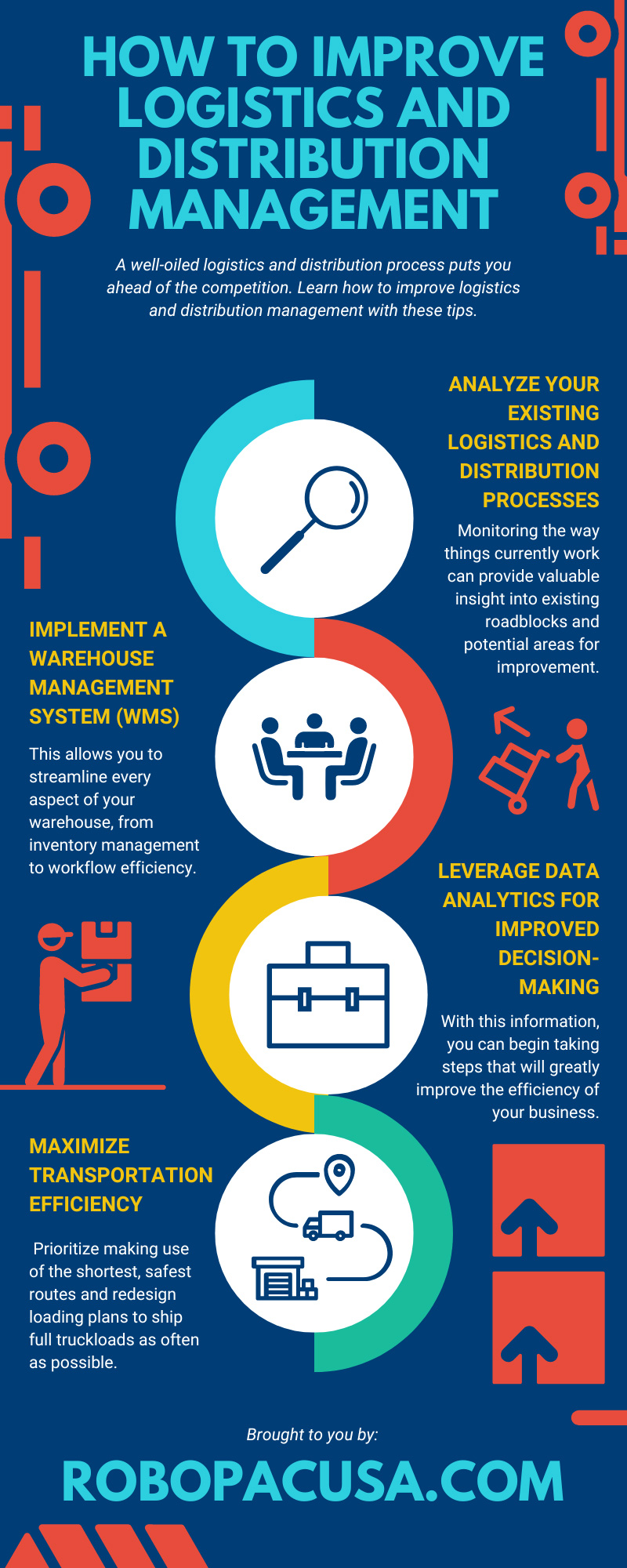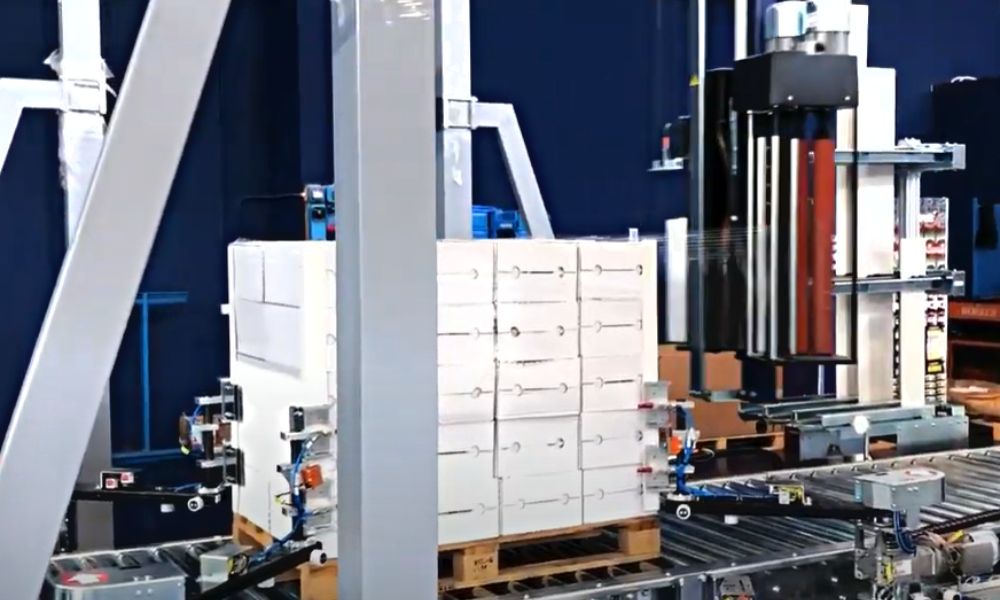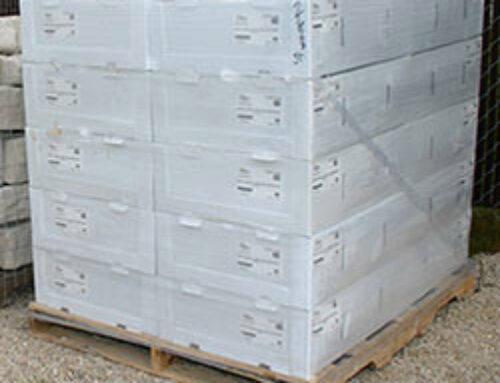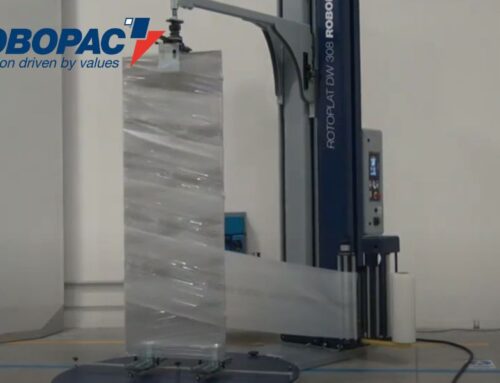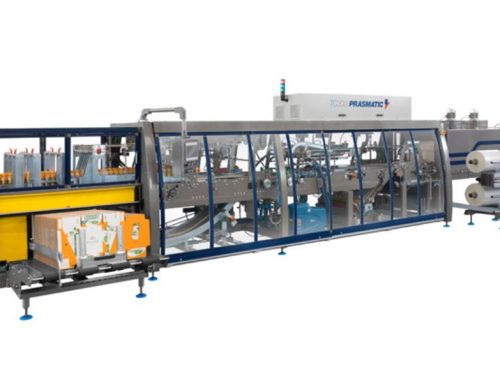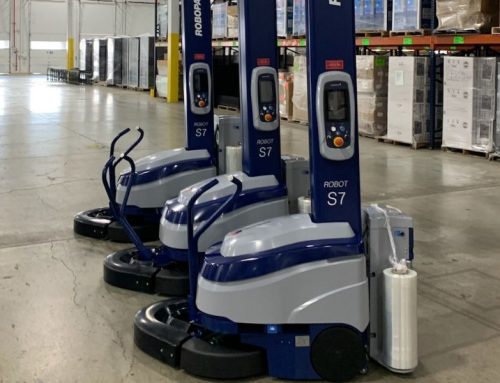Logistics and distribution management are essential components of any successful business. Without consistent and reliable logistics and distribution processes, companies can easily lose out on business opportunities due to delays, inventory mismanagement, or other issues.
Fortunately, businesses can take steps to improve logistics and distribution management, including gathering supply chain analytics, enhancing visibility with a warehouse management system, and investing in optimized automatic solutions. Read on to learn more about these and other top strategies for streamlining operations and ensuring that products get to customers quickly and efficiently.
Analyze Your Existing Logistics and Distribution Processes
When improving your logistics and distribution management, it’s important to start by analyzing all current processes. Monitoring the way things currently work can provide valuable insight into existing roadblocks and potential areas for improvement. Gather data on what’s working well and where things may need changes or optimization.
Additionally, keep track of costs and how much time each process takes. This will help you identify your most expensive or time-consuming processes, which in turn helps you determine how to adjust workflows and effectively increase the efficiency of your operations.
Using these insights, you can craft smart solutions to current issues to streamline operations and lessen the blow of any expenses associated with inconvenient roadblocks. This way, you can be confident that your business has working, stable methods of distribution that quickly, safely, and successfully deliver products or services to customers.
Implement a Warehouse Management System (WMS)
A sophisticated warehouse management system (WMS) can revolutionize your logistics and distribution operations by providing a comprehensive suite of features built to make your business more efficient. Such a system provides better visibility and control of operational activities, making it easier to ensure your team is completing tasks accurately and on time.
The advanced monitoring capabilities of a WMS also bring numerous advantages that increase visibility and boost data accuracy. This allows you to streamline every aspect of your warehouse, from inventory management to workflow efficiency. You can also access real-time analytics that provide crucial insights into all aspects of your operations, such as identifying areas for improvement or trends in customer buying behavior. Taking full advantage of a WMS allows you to optimize your operations for improved efficiency, better customer service, higher productivity, and cost savings.
By integrating the components of your warehouse into a unified platform, you gain access to accurate data that aids in streamlining tasks while reducing manual effort. Ultimately, investing in an effective warehouse management system will serve every aspect of your distribution operations while providing the peace of mind that stems from full visibility and control.
Leverage Data Analytics for Improved Decision-Making
Using data analytics to improve logistics and distribution management can have a massive impact on your bottom line. By leveraging the data you gather from evaluating current processes and implementing warehouse management software, you can gain insights into customer behavior, delivery times, and inventory management. With this information, you can begin taking steps that will greatly improve the efficiency of your business.
Data analyses can provide insights into trends in customer demand and preferences. This helps businesses quickly and successfully adjust their strategies to better suit current industry demands and challenges. With access to the right data, businesses are more likely to make smart, informed decisions that will lead to greater efficiency and improved customer satisfaction.
Prioritize Customer Satisfaction
Customer experience should be a top priority when considering improvements in logistics and distribution. By emphasizing customer satisfaction, companies can improve order fulfillment, reduce order-to-delivery times, and increase client engagement. This will have a positive impact on overall delivery performance as customers will feel more assured that their needs are being met.
Furthermore, if organizations create an ongoing cycle of customer feedback, they will receive valuable insight into their current processes. This in turn helps businesses identify ongoing successes and areas that need improvement.
In the long run, this approach to improving the customer experience can help build brand loyalty and trust from your clients. When businesses dedicate resources to refining these services, they can cultivate lifelong relationships with customers while improving upon overall service quality and logistical efficiency.
Maximize Transportation Efficiency
Transportation efficiency also plays a key role in your company’s logistics and distribution processes. An effective way to maximize it is to focus on the time and money you spend on transportation, as this process typically takes up the majority of expenses. Prioritize making use of the shortest, safest routes and redesign loading plans to ship full truckloads as often as possible. This will help minimize pollution, fuel consumption, and travel distance. Implementing these strategies leads to improved efficiency, profitability, customer service, and sustainability.
Another tip is to incorporate modern technologies such as route optimization software or tracking systems. These tools can help substantially streamline transportation procedures while improving customer service levels along the way.
Invest in Automation To Streamline Operations
Automating logistics and distribution processes is the way to go if you’re looking to streamline operations and save time. One example of an effective automated solution is using industrial stretch wrap machines with undermount scale kits. Scale kits that are placed securely under the turntable are more reliable than weighing systems integrated into the turntable. This is because they are less likely to be damaged by forks impacting the table. This allows workers to safely wrap and weigh product loads in a single step, which in turn saves time in your workflow and uses your floor space more efficiently.
Automatic stretch wrappers support high throughput and can be optimized with vertical corner board applicators to protect your products. Top sheet dispensers help protect your products from dust and condensation. Automatic roll changers (ARC) can maximize your uptime by automatically changing film rolls when necessary.
Portable stretch wrappers like Robopac USA’s Robot S7 are another ideal solution, especially for companies that rely on order-picked pallet loads for their customers’ requests. These machines enable you to wrap loads that have a wide variety of products, including loads with sharp corners and layers of softer products like paper towels or water bottles. Since the pallet sits on the floor, you can wrap any weight load. Better yet, since the robot moves around the pallet, you can wrap any width or length load. All in all, implementing automated solutions can be the key to running a successful logistics operation in today’s competitive marketplace.
Is it time to revolutionize your logistics and distribution processes? Find the best tools for optimizing your warehouse solutions at Robopac USA. Our expert team will guide you through our advanced secondary packaging equipment so you can find the machines that best serve your unique workflow. Streamline your operations and implement greater strategies for success when you partner with Robopac USA today.
